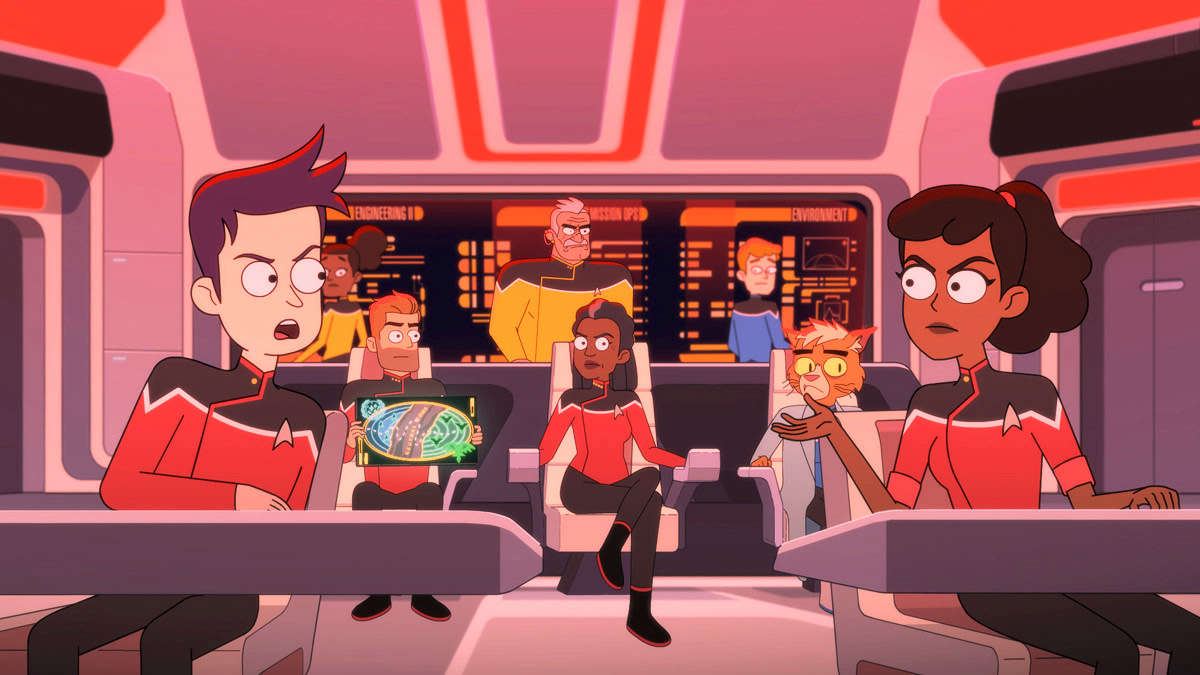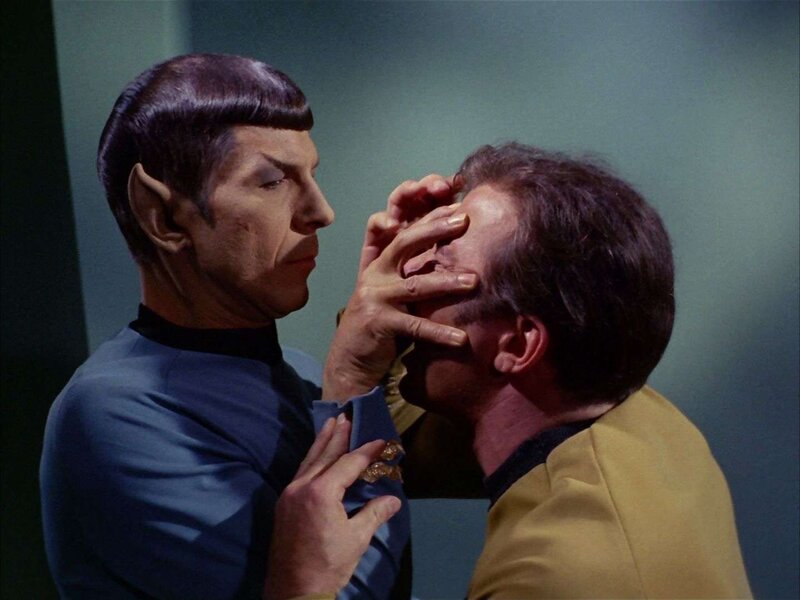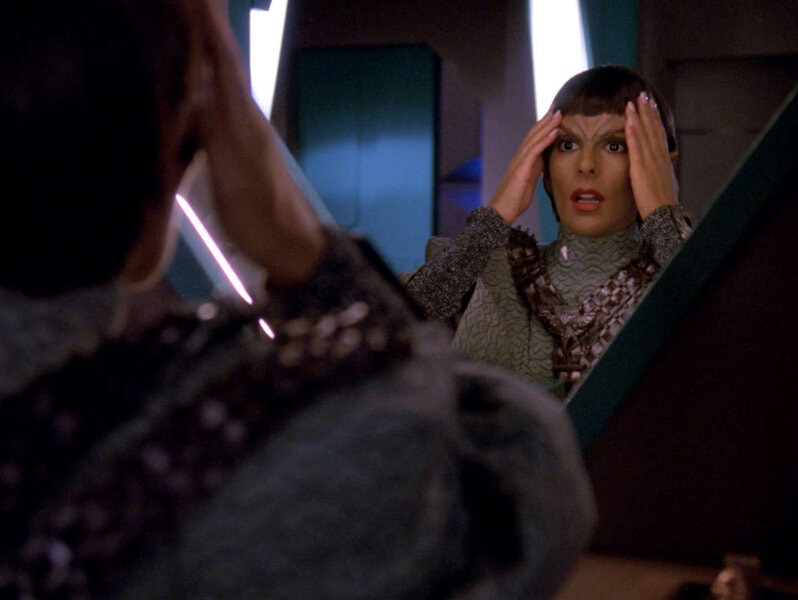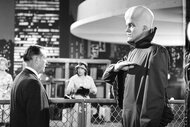Create a free profile to get unlimited access to exclusive videos, sweepstakes, and more!
Lower Decks proves spy missions in Star Trek almost never make any sense

For a series supposedly about intergalactic peace, the Star Trek universe has so many espionage narratives that it might just make you question what is really going on with the politics of the United Federation of Planets. But, if you didn’t feel like debating the morality of the various undercover operations throughout all of Trek, it might be slightly more fun to talk about the confusing logistics of these outer space spy missions. In the eighth episode of Star Trek: Lower Decks Season 1, “Veritas,” the crew of the USS Cerritos reveals the biggest truth at the heart of Starfleet: Almost none of these secret missions — from the Kirk and Spock days, through Picard — make any sense.
**SPOILER WARNING! Spoilers ahead for Star Trek: Lower Decks, Season 1, Episode 8, “Veritas.” Mild spoilers ahead for, like, every single spy storyline in all of Star Trek**
If you’re a devout Trek fan, “Veritas” is the funniest episode of Lower Decks so far. Not only are the Easter eggs numerous and seemingly never-ending, but the arc of the episode also addresses nearly every single covert mission in Star Trek history, and asks the question: Why do future spies act so ridiculous in space?
While the Lower Deckers believe they’ve been put on trial in an alien courtroom, Tendi and Rutherford end up admitting that the took part in a super-complicated covert mission that involved stealing an antique Romulan Bird-of-Prey from a Vulcan museum, infiltrating the neutral zone, rescuing a political prisoner who was in some kind of stasis chamber, and covering the whole thing up by accidentally erasing part of Rutherford’s memory. To make things more absurd, it’s clear that Tendi was (probably) recruited for this mission on accident and that Rutherford may not have been the right person for the job, either. Within the context of the episode, all of these jokes land, but the meta Trekkie stuff comes at the end when the Lower Deckers start asking questions about why anything happened in the episode at all.
“What did Klarr do to get captured by the Romulans? I missed that part.” Mariner asks Captain Freeman.
“Why did you let him hurt us with eels... if you knew it wasn’t a trial?” Tendi adds.
“And you tell me who was on that secret team that infiltrated the Neutral Zone?” Rutherford, reasonably asks.
Then, the lynchpin question comes from Boimler: “Why couldn’t you just ask the Vulcans to borrow the Bird-of-Prey?”
This stuff is all hilarious, and it gets better when you realize this is just a funhouse mirror version of some of the most deadly-serious Trek spy mission stories ever. Starting in The Original Series, with “The Enterprise Incident,” Kirk and Spock carry on an elaborate charade to convince the Romulans that Captain Kirk has gone insane, which means the Enterprise can be in the Romulan Neutral Zone “on accident.” Later, it’s revealed Spock and Kirk were keeping the crew out of the loop, mostly for plausibile deniability. But then, when Scotty and Bones are looped-in, that plot device kind of fades away.
Fast-forward to another Romulan-centric spy episode, the origin of the Tal Shiar in The Next Generation episode “The Face of the Enemy.” In this one, Counselor Troi wakes up to discover she’s been surgically altered to look like a Romulan because progressive Romulan dissidents need an undercover Starfleet officer with them in case something goes wrong. All of this was in service of Spock’s underground Romulan peace movement during the TNG timeframe. But... why was Counselor Troi abducted? Why was she selected for this spy mission? Why not just… fill her in?
The deeper you go with this stuff, the more absurd it gets. In “Chain of Command,” Picard is recruited for a spy mission in Federation Space because he has a background in “theta-band carrier waves,” which seems to imply that nobody who works in Starfleet Intelligence or in Section 31 (which hadn’t been revealed yet) knows anything about these carrier waves. And, even if you buy this, it also makes little sense that Picard would get to take two of his regular officers (who are also not spies), Worf and Crusher, with him. In fact, the Lower Decks episode makes a subtle jab at this in two ways: Ransom’s covert team does sport two commando-types who we’ve never seen before, and as Boimler points out, “Why was that a job for the Cerritos? Why couldn’t this have been a job, for like, the Enterprise?”
The answer to the question is, of course, Doylist, rather than Watsonian. “Chain of Command” needed Picard to get captured by the Cardassians while on an undercover mission, because that’s what the story is about. “The Enterprise Incident” needed to make the audience believe that Kirk had gone insane and that Spock might be a traitor, which is why everyone is in the dark for the first 20 minutes. In Deep Space Nine, Garak drops hints for the entire first season that he’s not really a simple tailor, so, in the Season 2 episode “The Wire,” when we find out he’s an exiled agent for the Cardassian spy group the Obsidian Order, the revelation is not super shocking.
But, more to the point, the question as to why the famously draconian Cardassians would let one of their former agents stay alive gets very complicated. Yes, it makes “sense” because Garak low-key spies on the Federation and the Bajorians, but his story, and the intent of the Cardassians relative to his former employer is pretty muddled. And, when you consider that you’ve got the Cardassian agent Seska, who just looks like a Bajoran on Voyager, it raises the question as to why everyone doesn’t always do this.
In Star Trek: Discovery the Klingon Voq has his memories suppressed so he can become the human Ash Tyler. But in TOS, a Klingon agent named Darvin just undergoes some cosmetic surgery and retains his memories, but still gets to spy on some Federation grain supplies. Did the Klingons (retroactively) learn their lesson from the whole Ash Tyler thing? Maybe? Maybe not?
In all spy stories, leaving out key information makes sense from the point of view of the writing. Duh. But when you start to try and make sense of it in-universe, the audience of every single Star Trek series will find themselves scratching their heads more than once. In “Veritas,” Lower Decks suggests there might be a deeper truth and, perhaps, even some logic to these convoluted outer space capers, but that we also may never be given all the information. Sometimes going where no one has gone before also means shutting up about it later.
Star Trek: Lower Decks has 2 episodes left in Season 1, which air on Thursdays on CBS All Access.





























